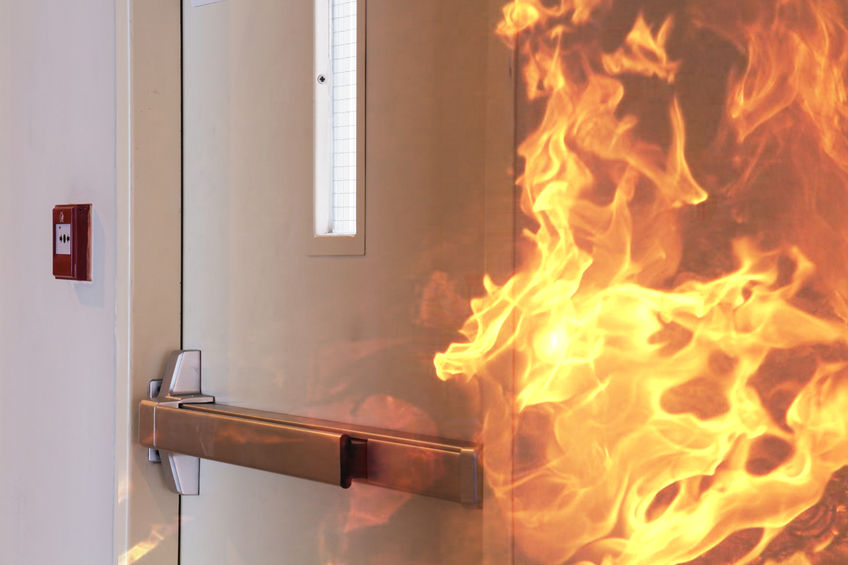Employers need to plan for workplace emergencies. Special procedures are required for incidents such as serious injuries, electrocution, flood, chemical spills, explosion and fire.
When a sudden crisis occurs, quick and effective action may help to ease the situation and reduce its consequences. To this end, it’s important to note that people are more likely to respond appropriately in emergencies if they:
- Are well trained and competent.
- Are given regular and realistic opportunities to practice the arrangements.
- Have clear, recorded and rehearsed plans, actions and responsibilities.
How to approach emergency planning
If a major incident in your workplace would pose risks to employees, the public or co-ordinating emergency services, you will need to draw up an emergency plan. If sharing your workplace with another employer, consider co-ordinating your emergency plans and procedures.
Emergency plan checklist
When creating an emergency plan:
Think about what could happen and how the alarm will be raised. Don’t forget shift and night working, weekends and periods when premises are closed.
Set out what to do, including how to call the emergency services. Help them by clearly marking your premises from the road.
Devise and write down a simple plan showing the location of any hazardous items. If having 25 tonnes or more of dangerous substances, you must notify the fire and rescue service and put up warning signs. The Dangerous Substances (Notification and Marking of Sites) Regulations 1990 cover sites where at least 25 tonnes of dangerous substances are held.
Decide where people need to go to reach a place of safety or access rescue equipment. Make sure that there is suitable emergency lighting along this route.
Ensure there are enough emergency exits for everyone to escape quickly. Emergency doors and escape routes must be kept unobstructed and clearly marked.
Consider essential acts such as emergency plant shutdown, isolation or making processes safe. Clearly identify important items like shut-off valves and electrical isolators, etc.
Train everyone in emergency procedures. Undertake practice drills. Don’t forget the needs of disabled people and vulnerable workers.
Work should not resume after an emergency if a serious danger remains.
The Management of Health and Safety at Work Regulations 1999 cover emergencies.
Developing emergency fire safety procedures
Fire is the most likely emergency that workplaces may face. The key legislation is the Regulatory Reform (Fire Safety) Order (RRO) 2005.
All organisations should have a well-thought-out emergency plan for dealing with fire. Your plan should make sure that people in your premises are aware of what to do in the event of fire and ensure premises can be evacuated safely. It should also describe your measures for effective fire safety management, fire prevention and, if fire breaks out, protecting people and property.
Your fire safety and evacuation plan will need to be appropriate to your premises and may include:
- How people are to be alerted to a fire, including how the fire and rescue and other services will be contacted and who will be responsible for ensuring so.
- Firefighting arrangements. If someone has been trained, and if it’s possible to do so without endangering personal safety, attempts can be made to contain and control a fire until the fire brigade arrives.
- How evacuation of premises is to handled. Identify key escape routes and assembly points and detail your procedures for checking premises have been evacuated.
- Specific arrangements for high fire-risk areas, including locations of highly flammable substances.
- Arrangements for evacuating people particularly at risk, such as young people, lone workers and the disabled.
- How processes/appliances/machines/power supplies are to be shut down in case of fire.
- What staff need to do in event of fire, including the identity and duties of staff with specific fire responsibilities, such as fire wardens.
- Contingency plans for when safety systems (such as fire-detection/warning systems, smoke control systems or sprinklers) are out of order.
A cornerstone of the RRO is the requirement for a Fire Risk Assessment. This will help you to a) identify the risks that can be removed or reduced, and b) determine the nature and extent of the general fire precautions needed to protect against the residual fire risk. Your emergency fire safety and evacuation plan should be based on the outcome of this Fire Risk Assessment.
Communicating your arrangements
Emergency plans in very small premises may be no more than a fire action notice. However, in more complex and larger premises, emergency planning should be more detailed.
The specific fire procedure for each property should be:
- Displayed on all notice boards.
- Issued to visitors on arrival.
- Integral to induction training of all new employees.

Managers must make sure that all employees, temporary workers and visitors are familiar with and understand the action to be taken in the event of an emergency. The procedures will require supplementary instruction if the work in particular areas poses special or unusual fire hazards or if staff work outside normal working hours.
Routine reviews are important to ensure the your emergency measures are being properly maintained.


